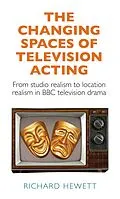This book provides a historical overview and then-and-now comparison of performing for British television drama. By examining changing acting styles from distinct eras of television production - studio realism and location realism - it makes a unique contribution to both television and performance studies, unpacking the various determinants that have combined to influence how performers work in the medium. The book compares the original versions of The Quatermass Experiment(BBC, 1953), Doctor Who (BBC, 1963-89) and Survivors (BBC, 1975-77) with their respective modern-day re-makes, unpacking the effects of the shift from multi-camera studio to single-camera location production. Textual analysis is combined with extensive archival research into production process and reception, alongside interviews with numerous actors and production personnel from more than sixty years of television production.
Autorentext
Richard Hewett is Lecturer in Media Theory at the University of Salford
Klappentext
Spanning the 1950s to the present day, The changing spaces of television acting is both a historical overview and a then-and-now comparison of performance in British television drama. By examining acting styles from distinct eras of television production studio realism and location realism the book makes a unique contribution to the fields of television and performance studies, going behind the scenes to unpack the various determinants that influence how performers work in the medium. The case studies are programmes that emerged in distinct eras of television production: The Quatermass Experiment (BBC, 1953), which was transmitted live; Doctor Who (BBC, 196389), pre-recorded 'as live'; and Survivors (BBC, 197577), which adopted an Outside Broadcast 'rehearse/record' model. These are compared with their respective modern-day re-makes to unpack the major developments that have taken place between the eras of studio realism and location realism, and the shift from multi-camera studio to single-camera location production. In order to establish the factors underpinning these changes, textual analysis is combined with extensive archive research into production process and reception, alongside interviews with numerous actors and production personnel from more than sixty years of television production. This fascinating account of acting for the small screen will be of interest to students of television history and screen performance, while its case studies offer particular appeal to cult television fans. Contributors include Mark Gatiss, Louise Jameson, Patrick Malahide, Kevin McNally, Waris Hussein, Graeme Harper and Tony Garnett.
Inhalt
Introduction1 Scaling down in early studio realism2 Refining studio realism3 The genesis of location realism4 The age of location realism5 The return of studio realism?Conclusion Index
